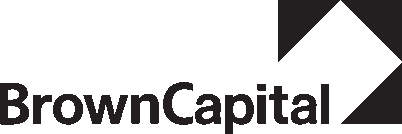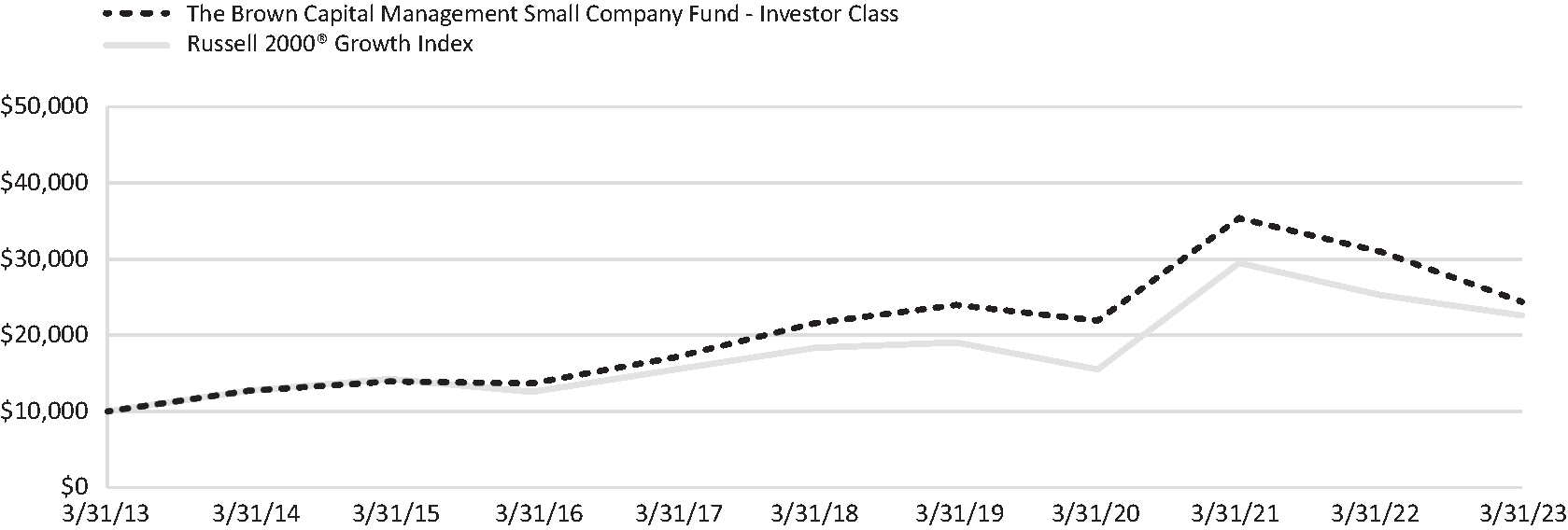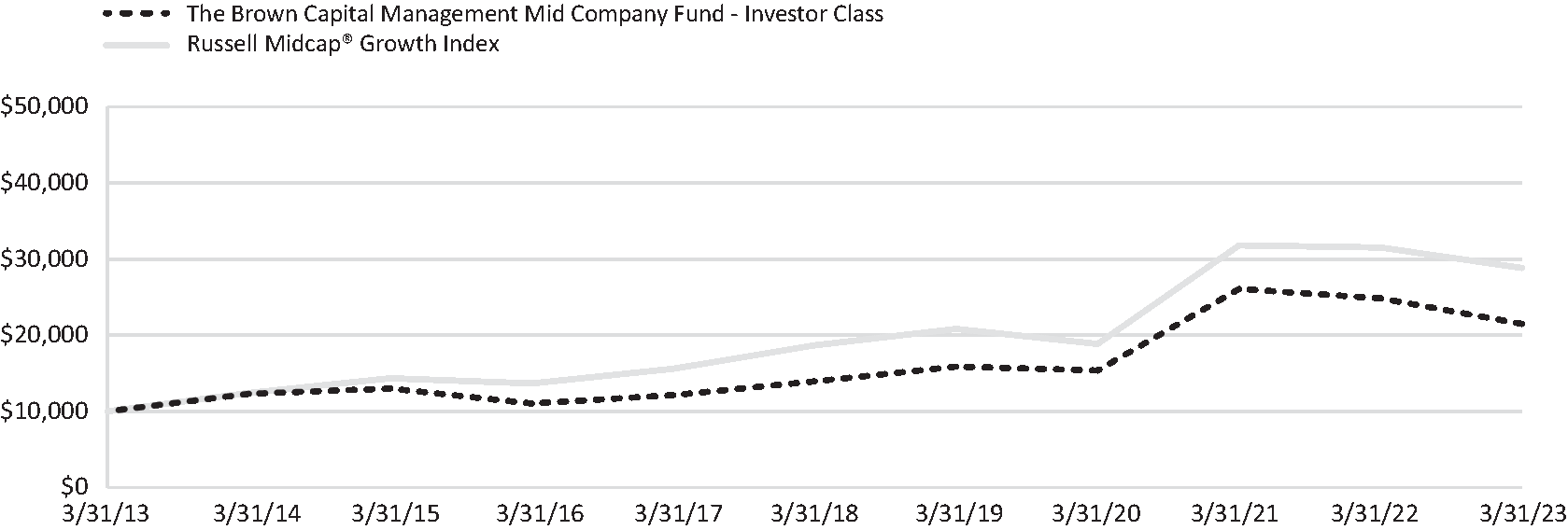At the close of the mutual fund fiscal year ended March 31, 2023, we are reminded of the lyric from The Shirelles: “Mama said there’ll be days like this.” The Brown Capital Mid Company team carries these words with us, despite the tough year that we have endured.
No question about it, the adverse macroeconomic conditions of the last year have had an impact on the valuations of our investments. Notably, over the past 12 months, inflation has remained persistently high, with the U.S. Consumer Price Index (CPI) peaking at 9.1% in June of 2022, the highest level in more than 40 years. In an attempt to rein in inflation, the Federal Reserve substantially increased its benchmark federal-funds rate from near zero to 4.75-5.00% over the past year. This increase in interest rates particularly hurt the stock prices of faster-growing companies because their valuations are based largely on the promise of bigger profits in the future. To put a present value on yet-to-be-determined earnings, analysts use interest rates. The higher interest rates are, the less valuable those future profits are today. So higher rates particularly hurt high-growth companies like the ones we own in the Mid Company Fund.
Especially in days like these, we remain committed to finding and owning what we call Exceptional Growth Companies (EGCs). At Brown Capital, we do not attempt to forecast interest rates, inflation or other macroeconomic events. Instead, we perform bottom-up fundamental research to forecast the profitability, revenue and earnings growth of each of our EGCs three to five years out. We believe EGCs save time, lives, money and headaches, or provide an exceptional value to consumers. EGCs often solve mission-critical problems, provide products and services that are hard to replicate, and have strong competitive advantages, making them sustainable investments over several years. In our opinion, EGCs are best in class and often have significant intellectual property or immensely valuable brands. In most cases, their products and services have large and growing addressable markets, and they are increasing their market share, with the ability to expand into adjacent markets. In our experience, these attributes often result in significant returns in the long term.
Whether or not we are on the verge of a recession is anybody’s guess. What is important is that recessions are an inevitable, albeit painful, part of the business cycle. Since 1948, the U.S. has experienced 12 recessions, or an average of one every six years. Because economic downturns are a regular part of the business cycle, an essential characteristic of an EGC is resilience. Resilient companies can operate in most economic environments and survive adverse conditions because they sell products or services their customers need. Furthermore, these products and services often have few or no substitutes, creating high switching costs. Resilience may matter little to those worried about the next 6-12 months, but for investors like us who are contemplating the next decade, it matters a great deal, given inevitable market and economic volatility.
EGCs are durable businesses that are less susceptible to economic shocks. Take ANSYS (ANSS), for instance, which we have owned in the Mid Company Fund since 2009. ANSYS is a leading provider of engineering-simulation software. Its technology has greatly reduced the dependency on physical prototyping through the use of highly complex software that incorporates various physics and engineering disciplines. Many customers, particularly in the high-tech, aerospace and automotive industries, spend millions of dollars on ANSYS software and count on ANSYS to operate their businesses. This dependency is evident in ANSYS’s upper-90% customer retention, which is among the highest in the software industry. Importantly, switching costs are high for ANSYS products with few comparable substitutes available.
Another example is Entegris, which is highlighted below as one of the new investments initiated during the year. Entegris sells semiconductor materials to semi manufacturers, semi-equipment companies, chemical companies, and others. As the world digitalizes and semiconductors multiply, Entegris’s products have become more critical. This is especially true with advanced chips that power electric vehicles, data centers and other rapidly growing markets. As compared to legacy chips, advanced chips are less tolerant of contaminants during the manufacturing process. Entegris is one of two companies with the filtering technology able to achieve required purity levels. This makes Entegris a vital partner to customers many times its size, such as Taiwan Semiconductor Manufacturing Company, adding to the company’s resilience.
EGCs are not impervious to failure but should be more resilient than the average company if we do our research properly. The qualities we desire are not a rigid checklist, as we believe investing is both art and science. Rather, we follow guiding principles that improve our chances of unearthing great businesses we can own for many years. We believe our intentionality, long-term investment horizon and discipline in our process should help us withstand various market climates and generate positive excess returns for our clients over time.
For the fiscal year ended March 31, 2023, the Mid Company Fund (Investor shares) fell 13.45%, underperforming the 8.52% decline of the index. As of March 31, 2023, the Fund consisted of 40 holdings with approximately 0.31% in cash.
Performance: Contributors
Among the contributors to performance for the year ending March 31, 2023, were Insulet (PODD) and MarketAxess (MKTX).
Insulet is a leading medical-device company that produces the Omnipod Insulin Management System to administer insulin to diabetics. Historically, insulin-intensive diabetics have used either syringes or tubed insulin pumps to administer insulin. Recently, innovations in diabetic blood-sugar monitoring, coupled with advances in algorithms and medical devices to automatically administer insulin, have dramatically improved the quality of life for insulin-intensive diabetics. Insulet’s Omnipod offers an attractive form factor for insulin delivery: a sleek, disposable, multiday pod that attaches to the body and delivers insulin in response to feedback from blood-sugar-monitoring devices. This is superior to the standard course of care which






